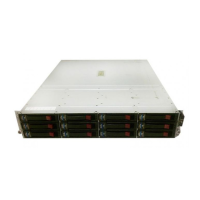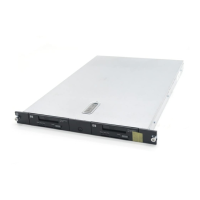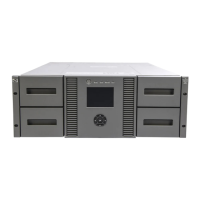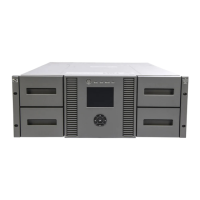Fat and skinny trees
There are two core-edge fabric topology types: fat tree and skinny tree. Table 1 describes fat and
skinny trees.
Table 1 Core-edge fabric topology types
DescriptionTopology type
At least 50% of edge ports are dedicated as ISLs, resulting in an ISL ratio of 1:1.Fat tree
Less than 50% of edge ports are dedicated as ISLs, resulting in an ISL ratio of x:1,
where x is 2 or more.
Skinny tree
Recommended ISL ratios
The core-edge fabric type has a high fabric cross-sectional bandwidth (the maximum amount of data
that can pass through ISLs at the fabric midpoint, which is the central connection or core of the fabric).
The higher the ISL ratio, the lower the cross-sectional bandwidth and the more prone a topology is to
ISL oversubscription. Oversubscription occurs when traffic is blocked due to insufficient ISL bandwidth.
NOTE:
When determining the ideal ISL ratio, you must consider the speed of the server, storage, and ISL
ports.
The minimum ISL ratio for an implementation depends on several factors, including:
• Location of server and storage fabric connection
• Server and storage hardware performance
• Data access type (see “Topology data access” on page 46)
• Server application performance requirements
Table 2 describes the recommended core-edge fabric ISL ratios.
Table 2 Recommended core-edge fabric ISL ratios
Recommended ratiosI/O workload
1:1 to 3:1
Higher I/O data intensive application requirements (> 70 MB/s at 2 Gb/s, >
140 MB/s at 4 Gb/s, > 280 MB/s at 8 Gb/s)
7:1 to 15:1
Lower I/O data intensive application requirements (< 70 MB/s at 2 Gb/s, <
140 MB/s at 4 Gb/s, < 280 MB/s at 8 Gb/s)
NOTE:
HP recommends a ratio of 7:1 for typical distributed data access.
Numeric representation
Core-edge fabrics can also be represented in numeric terms, such as n1 x n2, where n1 represents
the number of core switches and n2 represents the number of edge switches.
SAN fabric topologies44

